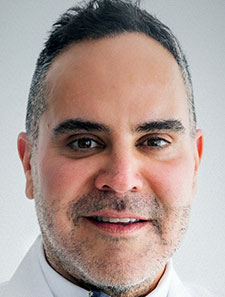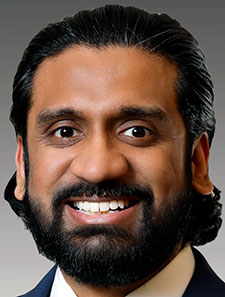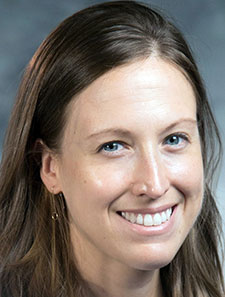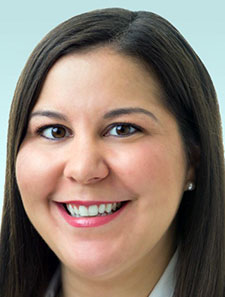 The COVID-19 pandemic, advances in technology, and new views about work-life balance have all impacted how medical residents learn in recent years.
The COVID-19 pandemic, advances in technology, and new views about work-life balance have all impacted how medical residents learn in recent years.

Dr. Barna
“Although the evolution of digital learning was already underway before the COVID-19 pandemic, the need for social distancing and the widespread adoption of remote communication technologies dramatically accelerated this transformation,” said Eric Barna, MD, MPH, associate professor of medicine in the department of internal medicine at Mount Sinai Hospital in New York, an academic urban hospital with more than 1,100 beds. Simultaneously, new digital tools and learning platforms emerged and flourished.

Dr. Doraiswamy
Likewise, discussions around work-life harmony predated the pandemic. As it came to an end, trainees placed an even greater emphasis on achieving balance, Dr. Barna said.
Vignesh Doraiswamy, MD, FACP, FAAP, a med-peds hospitalist and assistant professor of internal medicine and pediatrics at Columbus’ Ohio State University Wexner Medical Center in Columbus, Ohio, an urban academic hospital with more than 1,400 beds, believes a shift in learning started back in the 2010s, when smartphones and social media became prevalent. Medical educators have noticed more profound changes occurring in the last five years. These disruptors have brought both challenges and opportunities for teachers.
The impact of COVID-19
The pandemic had a great impact on learning in a short time. The deadly illness disrupted resident training when protocols needed to change quickly. “Clinical exposure diminished as elective procedures were postponed and non-urgent rotations were paused, limiting hands-on procedural and diagnostic experiences,” said Dr. Doraiswamy, who is also the associate program director of Ohio State Wexner Medical Center’s and Nationwide Children’s Hospital’s combined internal medicine and pediatrics residency training program in Columbus, Ohio. The latter hospital is an academic urban pediatric hospital with almost 700 beds.
Meanwhile, telemedicine use increased drastically, requiring residents to master virtual patient interactions, remote monitoring, and digital workflows, often without prior formal training, Dr. Doraiswamy continued. Educational formats shifted to virtual didactics, simulations, and online modules, reducing in-person work.

Dr. Feeney
Inpatient units, such as intensive care units and medical wards, were often overwhelmed with patients, which led to intensified workloads. This shift accelerated the need for clinical decision-making skills while heightening burnout risks, Dr. Doraiswamy said. Although wellness suffered due to prolonged stress, isolation, and fear of infection, the pandemic ultimately fostered resilience and adaptability. Today, hybrid training models, virtual didactics, and tech reliance persist as a result of the pandemic.
With every challenge, struggles and opportunities exist, said Colby Feeney, MD, med-peds hospitalist and med-peds program director in the school of medicine, department of medicine, and department of pediatrics at Duke University in Durham, N.C., an urban hospital with more than 1,000 beds. She believes that COVID-19 forced programs, institutions, and even the Accreditation Council for Graduate Medical Education (ACGME) to re-examine how it does things and why, resulting in many positive changes. It provided an opportunity to forgo the unnecessary and respond to residents’ and programs’ current needs. Short-term, negative impacts on patient volumes and procedures occurred, but these have now returned to normal.
Ensuring adequate clinical training
One of the greatest challenges of restricted in-person interactions was maintaining the engagement, excitement, and participation that a skilled educator naturally fosters in a room full of trainees. “In a virtual setting, it can be difficult to find creative ways to ensure trainees remain attentive, actively participate, and stay present despite the distractions of their own environments,” Dr. Barna said.
During the pandemic, only essential team members entered patient rooms, Dr. Feeney said. However, some multidisciplinary team members could still perform virtual hospital rounds, allowing them to participate. Although the number of telehealth appointments has decreased significantly since the pandemic, she believes that they are still effective alternatives.
Duke’s residents had virtual Zoom check-ins every two weeks to maintain connectedness. Socials were organized online, such as an online cooking class that residents could participate in from their own kitchens. “Finding ways to stay connected and support one another during an otherwise isolating time was very important,” Dr. Feeney said.
Lasting changes included expanding access to mental health resources and implementing curricula focused on everything from peer debriefs and dealing with professional grief to vulnerability and self-compassion, Dr. Feeney said.
Dr. Doraiswamy’s institutions were fortunate to have the necessary support and personal protective equipment to allow residents to continue their clinical training, including seeing COVID-19 patients in the intensive care unit.
Notable changes in learning
As a result of multiple disruptors in recent years, Dr. Feeney has observed that residents are seeking greater variety in the ways they consume information and learn. Traditional didactics, such as lectures and modules, are less appealing, and instead, residents desire stimulation and interaction with peers when learning.
For example, Medical Twitter offers excellent diagnostic schemas or “Tweetorials” on medical topics compiled by experts. Regarding other asynchronous methods, residents seem to prefer podcasts over modules or reading assignments, Dr. Feeney said.
Dr. Doraiswamy has also seen a shift toward technology-driven, competency-focused learning (e.g., simulations, e-learning) and collaborative mentorship over hierarchical instruction. Residents prioritize digital resources (e.g., UpToDate) and social media (e.g., Twitter/X, Instagram, Bluesky) for just-in-time knowledge.

Dr. Theodorou
“The key is to know where to find answers quickly, rather than trying to know everything off the top of your head,” Dr. Doraiswamy said. “Although that may have made sense decades ago, medicine continues to become more complex. Consider the fact that the number of treatments and medications for common conditions, such as type 2 diabetes mellitus and heart failure, has increased multifold over the last few decades.”
Residents have proven that they’re capable of withstanding significant changes within their learning environments. “They have shown tremendous flexibility and adaptability to a medical system that has undergone massive changes in a short time,” said Maria Theodorou, MD, FACP, FHM, associate program director of the internal medicine residency program, medical director of the complex high admission management program, and assistant professor of hospital medicine in the department of hospital medicine at Northwestern University Feinberg School of Medicine in Chicago, an urban, academic hospital.
How teaching has changed with the times
As a member of Generation X, Dr. Barna grew up without smartphones and social media, and adapted to technological changes over time. “However, the pace of transformation in medical education in recent years has been unprecedented,” Dr. Barna said.
Dr. Barna views learning as a multi-dimensional, non-linear process, significantly enhanced by technology. He engages with artificial intelligence (AI) regularly to enrich his teaching and has moved away from traditional didactic methods on rounds. Instead, he integrates technology, visual and audio media, and non-traditional resources—such as podcasts and YouTube videos—to engage learners more effectively.
In many ways, Dr. Barna said, he has become a student again—continuously learning about emerging AI-driven tools and interfaces while exploring innovative ways to incorporate them into teaching.
Dr. Doraiswamy has had to adapt to the increased demand for virtual educational offerings. His institution uses Tweetorials, medical podcasts, and simulation as well as point-of-care ultrasound to give learners more hands-on practice and experience.
Trends in learning
Today’s learners expect more from their educators—they want to be inspired, engaged, and excited by their teaching. Trainees anticipate that educators will not only keep pace with evolving technology but also integrate it into their clinical expertise and deliver impactful learning experiences, Dr. Barna said.
As work intensity increases, residents naturally shift their focus toward clinical care, which makes it challenging to attend traditional educational conferences. This aligns with a broader desire for better work-life harmony, recognizing that improving clinical efficiency provides time for decompression and personal fulfillment beyond residency.
Additionally, residents favor interactive, problem-based learning led by enthusiastic educators who can foster deeper engagement over traditional didactic sessions, Dr. Barna said.
Dr. Doraiswamy has noticed some other learning trends, such as a rising interest in leadership and systems training. “Physicians need skills beyond clinical expertise, including quality improvement, healthcare economics, financial well-being, and leadership abilities,” he said.
Further, residents are increasingly exploring non-traditional career trajectories that combine clinical practice with research, education, policy work, or entrepreneurship.
Similar to evidence-based medicine, residents now expect their educational experiences to be grounded in educational theory and proven methodologies, Dr. Doraiswamy said. Residents continue to have a big interest in medical education as a whole; they value programs that have medical education rotations, electives, and tracks.
A focus on mental health
Supporting mental health is an important component of maintaining work-life balance. To achieve this, Mount Sinai Hospital’s residency program has designated wellness-champion faculty who regularly engage with house staff and establish clear channels for listening and responding to residents’ needs.
To ensure comprehensive support, trainees have access to mental health resources, can take scheduled wellness days, and receive targeted interventions when needed. “Through close collaboration with residency advisors, the clinical competency committee, and chief residents, we proactively identify and support trainees who may be struggling, providing individualized care to promote their overall well-being,” Dr. Barna said.
Northwestern’s residency program aims to normalize emotional challenges among trainees through transparency. To be successful, educators within the program model this behavior. “Attendings disclose their struggles and vulnerabilities, which normalizes the universal toll that medicine can take on us as clinicians,” Dr. Theodorou said. “Demonstrating to trainees that their challenges are not unique promotes a culture of psychological safety.”
Northwestern’s residents have flexible days off that they can take during outpatient or elective rotations. They can also take breaks from clinical duties to attend doctors’ appointments and can take time off to recover from challenging clinical scenarios or to prevent duty hour violations on particularly taxing rotations.
Because time off promotes wellness, Dr. Doraiswamy’s institutions try to give residents back as much time as possible in a variety of ways. For example, the ACGME has historically had patient caps (i.e., how many patients it’s safe for a first-year resident to see or for a senior resident to supervise). To ensure that workloads are manageable while balancing the need for exposure to learn, his institutions’ caps are lower than the ACGME’s limits.
The joys of teaching
Although disruptors have brought both challenges and opportunities for residency educators in recent years, many professors continue to glean great rewards from teaching.
“Residents’ blend of enthusiasm, curiosity, and fresh perspectives constantly reinvigorate my own practice,” Dr. Doraiswamy said. “I appreciate how they challenge assumptions by asking such questions as, ‘What if we approach this case differently?’ This pushes me to refine my methods and stay current.”
Dr. Doraiswamy enjoys guiding residents through complex procedures or diagnoses and witnessing “aha” moments when everything clicks. “Residents bring a collaborative spirit by prioritizing teamwork over hierarchy and openly discussing challenges such as burnout or sharing innovative tools they’ve discovered,” he said.
Teaching residents isn’t just imparting knowledge; it’s a mutual exchange. “They keep me grounded, reminding me of medicine’s human side through their empathy and patient-centered focus,” Dr. Doraiswamy said. “Most importantly, watching residents evolve into skilled, confident physicians is incredibly fulfilling. Their growth reaffirms why I love this field—it’s about nurturing the next generation while growing alongside them.”
For Dr. Barna, residents’ enthusiasm for learning, growth, and skill development is both inspiring and motivating, and often promotes self-reflection and a drive to continuously improve. “I’m consistently impressed by the accomplishments of our incoming intern classes and the remarkable achievements they have already attained early in their careers,” he said. “Most of all, I’m in awe of our residents’ talent, dedication, and ability to provide compassionate care to an extraordinarily sick patient population with both grace and passion.”
Dr. Feeney loves seeing residents learn and grow. “They develop so much as clinicians, advocates, researchers, educators, and just as people in the formative years of training,” she said. “Seeing them advance to caring for patients independently is extremely fulfilling. And doing that alongside them, supporting them in that struggle, meeting their loved ones and their babies born during residency … that’s the cherry on top.”
Karen Appold is an award-winning journalist based in Lehigh Valley, Pa. She has more than 25 years of editorial experience, including as a newspaper reporter and a newspaper and magazine editor.